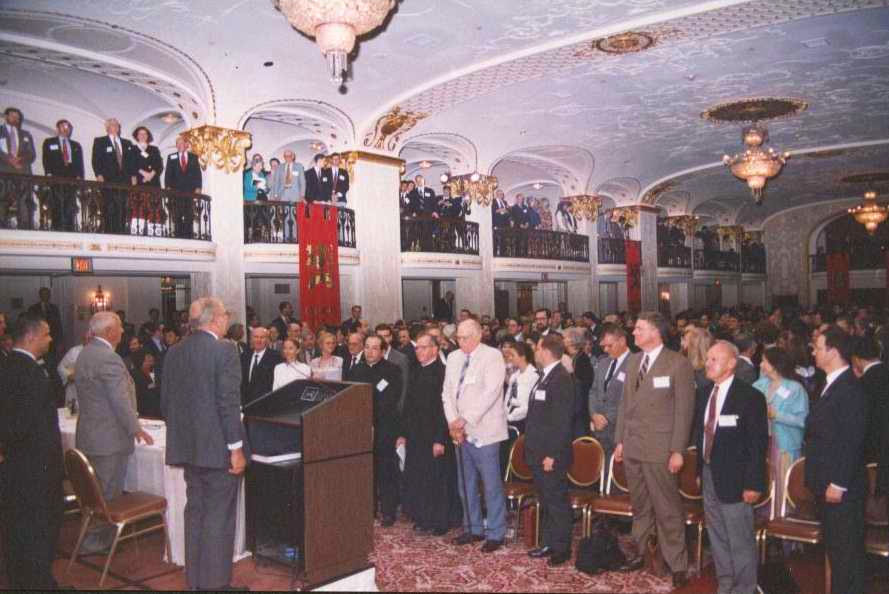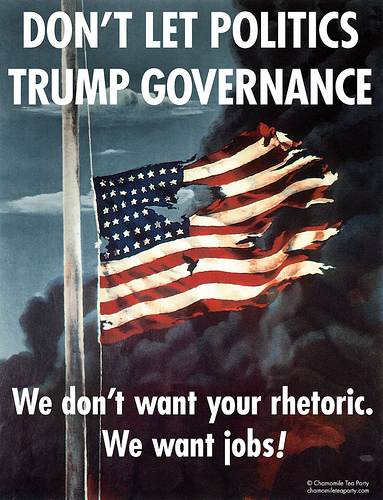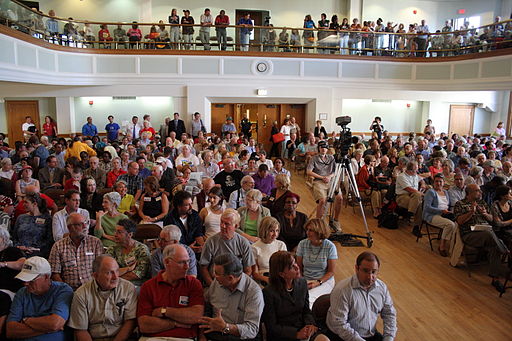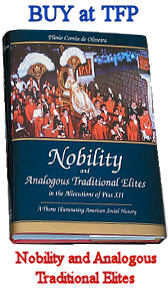Purely ideological debates on the issues of equality and inequality—and especially on the subject of monarchy-aristocracy-democracy—have not customarily occupied center stage in the United States. Only in the years immediately following independence did a debate of this nature have some import in American political life. An example of this was the controversy between Jefferson and Adams over the correct interpretation of the American Revolution. While the former adopted a position more akin to the Jacobin faction of the French Revolution, the latter upheld the more moderate principles of the English Enlightenment.(1)
After a consensus was reached on the republican and democratic form of government, the focus of American political debate shifted to other areas, whose ideological nature was more implicit than explicit, such as taxation, administration, regional disputes, territorial expansion, and so forth. These issues only indirectly reflected the aristocracy-democracy controversy, which still continued to hold center stage in Europe’s political debate as well as in its intellectual and cultural life. The only issue with a more clear-cut ideological nature that sparked a passionate debate in the United States was slavery.
One effect of this ideological vacuum was that Americans increasingly began to consider political life, and the State itself, as merely a means to promote the material progress and well-being of the population. The ideological foundation of policy was seldom considered.

Mrs. William K. Vanderbilt, Jr (center) at a Charity Tea and Lunch fundraiser on Madison Avenue, NY, May 23, 1909.
As this pragmatic politics became the norm, social life was relegated to a secondary plane, since it was not considered important for the nation’s progress, but merely a question of etiquette, gallantry, and honor. A dichotomy was created between political life and social life. The same men who would violently disagree in the political arena could live together amenably in the social sphere.
After the Second World War both the general public and intellectuals began to show growing interest in the subtleties and complexities of social life. Numerous books and essays highlighted the importance of these questions. This revival of interest in social issues coincided with a growing public discontent regarding political life. Gradually, the politician lost his status as an authentic representative of the people and increasingly came to be seen as an opportunist. Large sectors of public opinion formed the conviction that the democratic system had become flawed since the dominant parties no longer represented the people’s true sentiments and interests.
This frustration with the political class is escalating and expresses itself by pointing out the moral or financial scandals of elected officials. But the deeper issue of this discontent lies in the contrast between the democratic myth Americans learn from elementary school and the real situation they are confronted with every day.
Americans are indoctrinated with a notion of direct democracy drawn from the democracy that flourished in Athens, where the great orators debated the current issues before the whole people, who would later vote to decide the destiny of the city-state. This notion is reinforced by an idealized vision of the town-hall meetings in the small villages of New England in the colonial period, where the citizens participated fully in public life by casting their votes in the local assemblies. But few Americans believe that today’s democracy corresponds to this idealized notion. Somewhere along the course of American history this ideal democracy seems to have been derailed.

The book launching of Nobility and Analogous Traditional Elites in the Allocutions of Pius XII at the historic Mayflower Hotel, Washington, D.C. – September 28, 1993.
In face of this overwhelming disillusionment with political life, a growing number of discerning Americans are turning their eyes toward the elites who still thrive in the nation’s social life. They see them as a sector from which hope may yet come. For these people, the authentic elites better embody the aspirations of America and are thus more capable of providing adequate solutions to the nation’s quandary.(2)
This concern and hopes it generates could still change the course of American history.
(1) Cf., for example, Merrill D. Peterson, Thomas Jefferson and The New Nation: A Biography (New York: Oxford University Press, 1970), p. 443.
(2) This return of the social sphere to the center stage of American life may take surprising twists. For example, who would imagine that a vanguard leftist magazine like the Utne Reader would encourage its readers throughout the country to establish conversation salons in the manner of the old literary salons of the upper society of Paris and New York? In an article published by the New York Times on April 13, 1992, Jonathan Rabinovitz reports that the Utne Reader sees these salons as a means to realize a social movement in the spirit of the 1990s. The idea has been well received. To date, more than five hundred salons have been organized by readers of the magazine. Thus the salons, which served so well to foment and spread revolutionary ideas in eighteenth-century France, are now being revived with similar goals in contemporary America. This indicates a new appetite for conversation within a context that is more social than political, and could considerably influence the very structure of American democracy.
Plinio Corrêa de Oliveira, Nobility and Analogous Traditional Elites in the Allocutions of Pius XII: A Theme Illuminating American Social History (York, Penn.: The American Society for the Defense of Tradition, Family, and Property, 1993), Appendix I, pp. 329-330.













